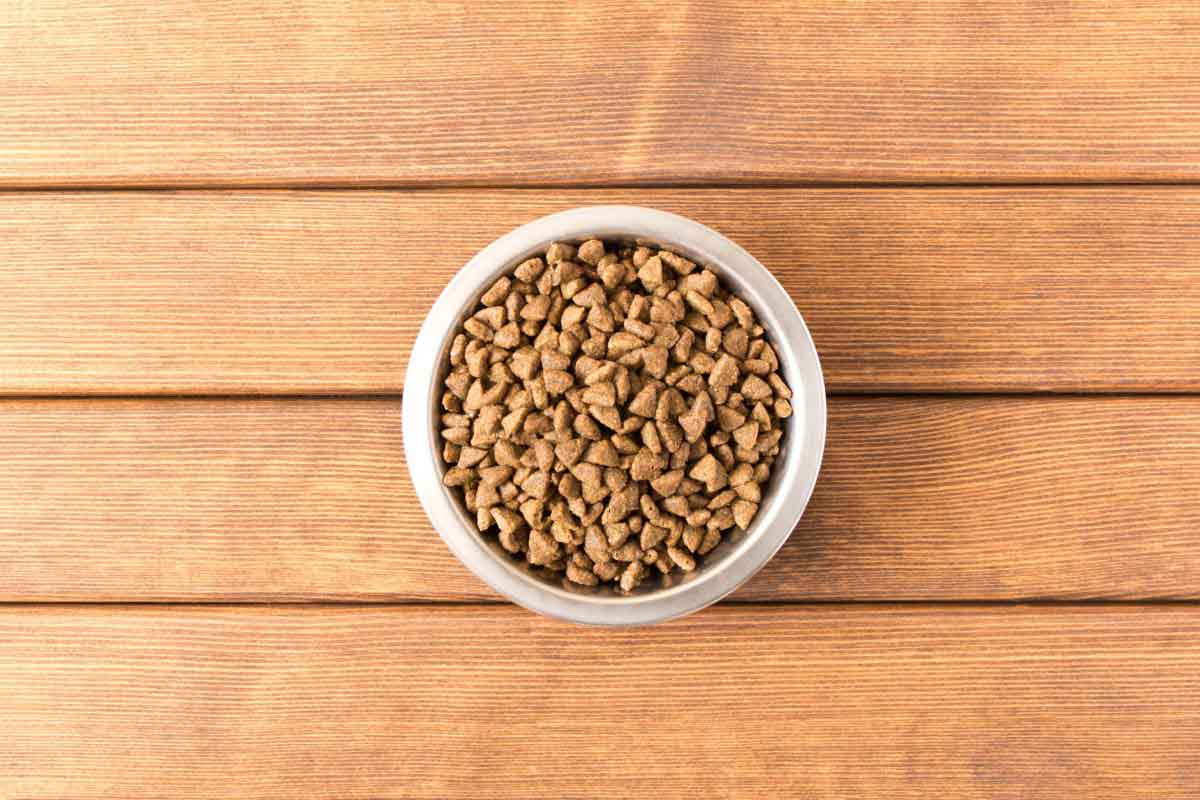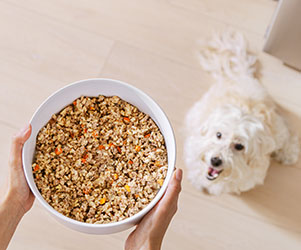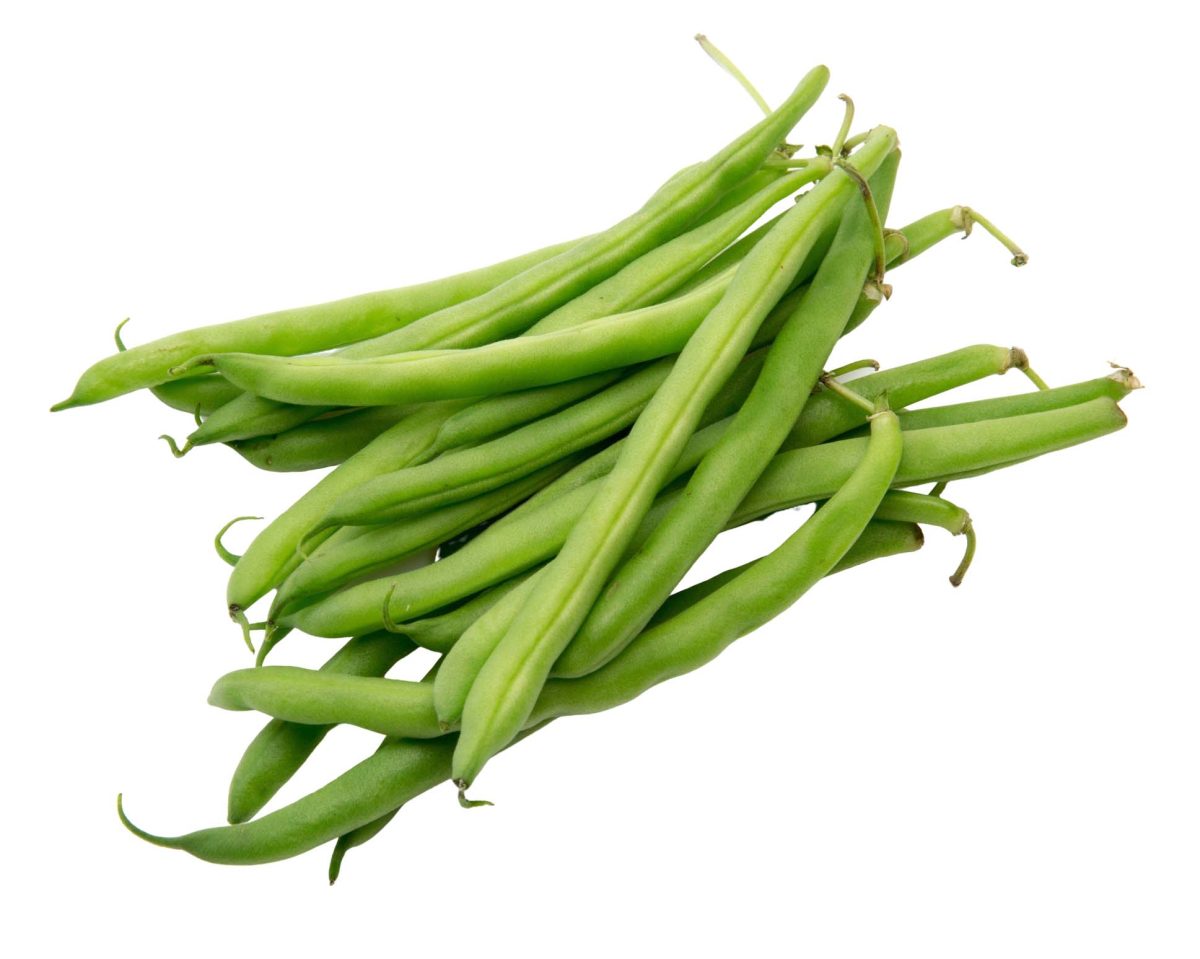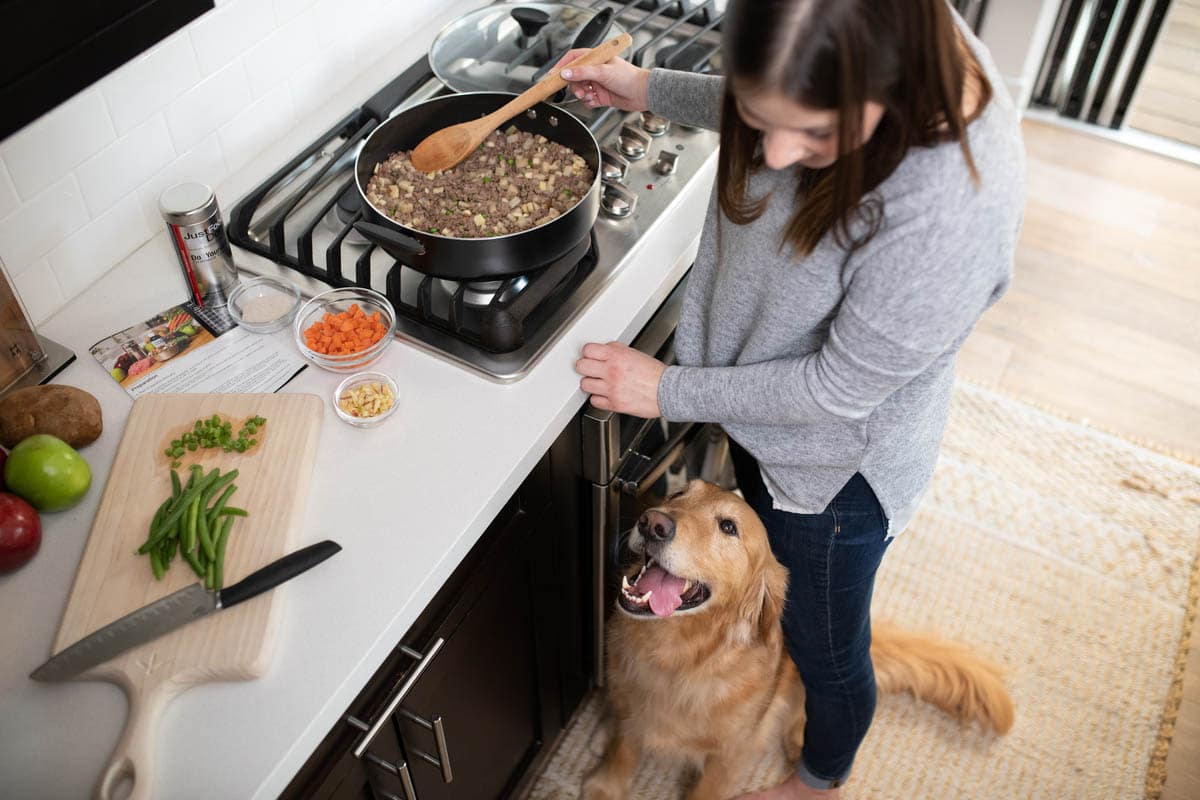Is Dehydrated Dog Food Good for Dogs?
Taking a look at the benefits and drawbacks of dehydrated dog food in comparison to other types of dog food.
As loving pet parents, we all want our dogs to have the best food available. But deciding what is best is complicated. One thing most people can agree on is that pet food should be made of healthy ingredients. And, like healthy human food, free of preservatives you can’t pronounce.
But what about dehydrated dog food? It has a long shelf life, but what is its nutritional value? Is it the same thing as freeze-dried dog food? Let’s take a look at dehydrated dog food to learn more about the nutritional benefits of the different types of dog food.
What Is Dehydrated Pet Food?
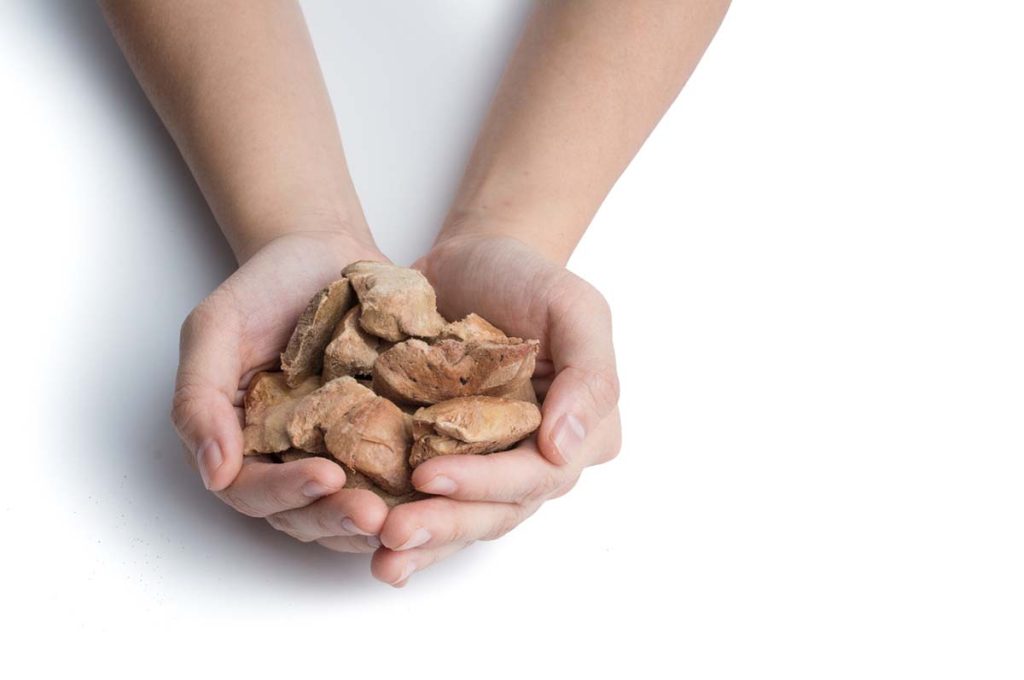
Let’s start with the basics. What exactly is dehydrated dog food? As the name implies, raw food goes through a drying process to reduce the moisture content. The thinking is that a lower moisture content helps lock in essential nutrients that your dog needs.
While dehydration is actually one of the oldest forms of preservation of food, there is a lot of variability with regard to the methods used for dehydrating food and their impact on nutritional quality. It’s less expensive than other methods to preserve fresh food. In essence, the dehydration process is one of several processes designed to create what are known as shelf-stable foods. These foods can be stored at room temperature for extended periods of time.
One of the biggest benefits of dehydrated dog food is it slows the growth of pathogens like bacteria by removing the water they need to live. Dehydration also has a minimal effect on the nutritional value of the food and, ultimately, produces high-quality, nutrient-rich pet food.
What are the Benefits of Dehydrated Food?
There are several reasons why you might decide to switch to dehydrated food for your pooch. Let’s take a look at some of the benefits of dehydrated dog food that are important to consider when choosing your pet’s food.
Longer Shelf Life
A big reason why people make this choice for their dog’s diet is that it is very convenient. Dehydrated dog food is shelf-stable for much longer than other types of food. It’s also easy for pet owners to feed — just pour it into the bowl, add some water, and let your friend gobble it up.
The shelf life for dehydrated food is incredibly long, which means you don’t have to do much to keep it from spoiling. Unlike raw dog food and many types of fresh dog food, it doesn’t require refrigeration.
Another benefit is that dehydrated dog food options last longer than other types of dog food. While the box might say it contains 10 pounds of meals, that means that is its dry weight. When you rehydrate that 10-pound box, you actually get four times its weight in food. That means for a 10-pound box, you get 40 pounds of food.
You Don’t Need a Lot of Storage Space
Dehydrated dog food requires much less space for storage than dry dog food. Dehydrated food comes in compact packaging, which means you don’t need as much space.
That means it requires less preparation than a raw diet or a whole-food diet. And fresh food requires more freezer or refrigerator space than dehydrated dog food. The only thing you need is some water to rehydrate it before serving it to your dog.
Because of its compact packaging, it’s also easy to take on trips. For those pet parents who like traveling with their best friend without compromising his nutrition and overall health, it’s an excellent option. Even if you enjoy hiking, the packages are lightweight, making it easy to bring your buddy’s food with you.
Minimal Processing
Finally, because dehydrated dog food is processed at low temperatures, the moisture is removed gradually. That allows for it to retain its nutritional value, which may make it better than some brands of kibble and certain traditional processing methods.
Research shows a high variability of nutrient value in dog kibble, with an excess of fiber that may affect digestibility in some brands. Once the food is rehydrated, the food contains most of the same nutrients without the preservatives or other chemicals found in other types of dog food.
It’s important to point out, however, that research shows fresh food formulations have the highest digestibility and soluble protein content.
How Does Freeze-Dried Dog Food Compare?
Freeze-dried dog food undergoes a similar dehydration process. But rather than warm air dehydration, freeze-dried dog food is dehydrated at a low temperature. During the process of freeze-drying, the dog food is frozen at low pressure, and the ice that is normally created during freezing is removed.
Though both processes effectively involve dehydration, there is a difference in the moisture content of each. With dehydration, some 95% of the moisture content is lost, but that compares to 98 – 99% with freeze-drying.
Some argue that allows for the texture and flavor to remain basically unchanged with freeze-drying, though other experts dispute this claim. Those who argue freeze-drying gives food a better taste say that’s because air-dried dog food is lightly cooked, which can alter certain enzymes.
This leaves the meat and fat in the food vulnerable to oxidation, whereas with freeze-drying that doesn’t happen. However, whether or not dog food is tasty can be difficult to measure, given individual preferences.
In fact, research shows that while foods dried by both freeze-drying and dehydration may help with storage and shelf-life, they are often less palatable than other types of food. There may be better alternatives to both options for palatability and digestibility.
Whole, Fresh Foods May Offer a Better Alternative
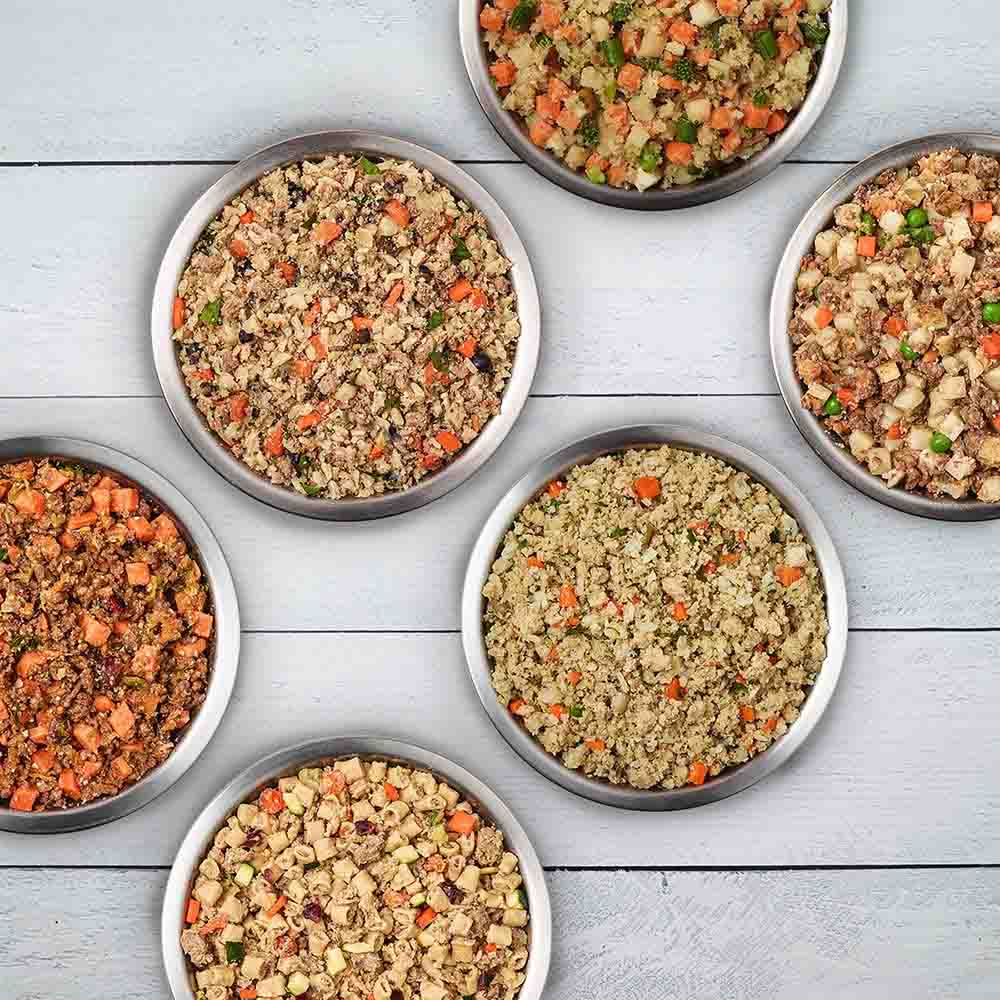
While the digestibility of freeze-dried and dehydrated foods as compared to traditionally processed kibble and other dog foods has not been adequately demonstrated in the research, this is not true for dog food made with human-grade whole, fresh ingredients.
Feeding your dog kibble, with its additives and fillers is simply not as digestible as dog food made with whole food ingredients. Research demonstrates that your furry friend may get more out of a whole-food diet that includes human-grade ingredients.
In short, the study showed that dogs fed fresh whole food absorbed more nutrients than when fed a diet of processed kibble. Those dogs also produced as much as 66% less poop than when eating even a premium kibble diet.
Basically, less waste in equals less waste out, which has an overall beneficial effect on your pet’s wellness. It’s also a better alternative for dogs with sensitive stomachs and those in need of a special diet as determined by a veterinary nutritionist.
Fresh Whole Food is a Holistic Alternative
At JustFoodForDogs, we believe that the key to a healthy diet for your dog is fresh dog food made with gently cooked whole ingredients and provides human-grade nutrition. That is exactly what you’ll find in our recipes.
These include our Pantry Fresh shelf-stable recipes, our Fresh Frozen recipes, and our fresh food dog treats! Our mission is to ensure that every dog has access to a healthy diet and a happier life. Give us a try for two weeks, and we’re sure we can change your dog’s life for the better!
This content is for informational use only and does not replace professional nutrition and/or medical advice, diagnosis, or treatment. It is not a substitute for and should not be relied upon for specific nutrition and/or medical recommendations. Please talk with your veterinarian about any questions or concerns.
